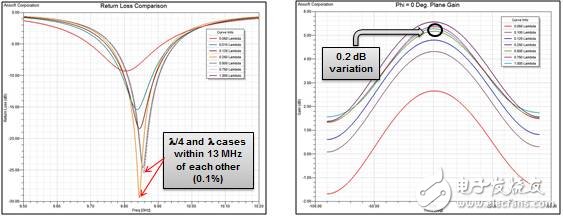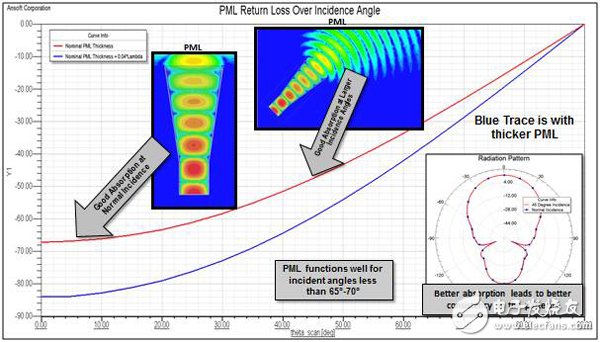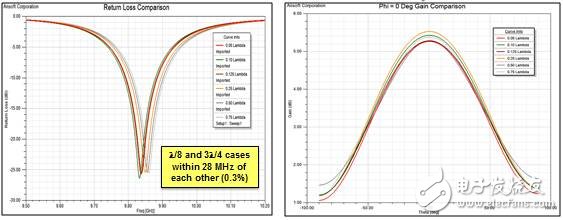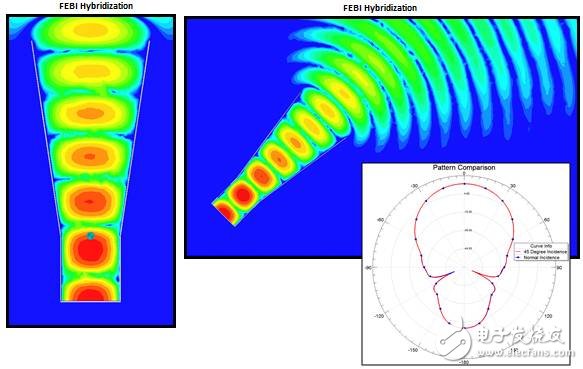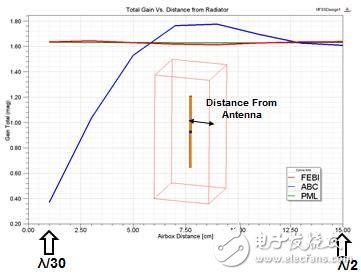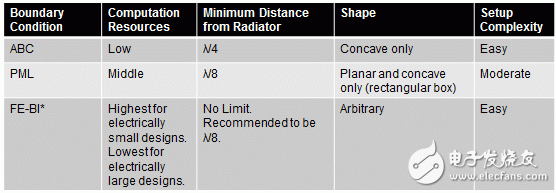As we all know, there are three absorbing boundary conditions in HFSS, namely RadiaTIon (ABC), PML and FE-BI. What is the difference between the application of these three boundaries? How should it be applied? Today, Xiaobian is here to give you a good analysis. RadiaTIon Border (ABC): – when calculating strong radiation problems such as antennas, the distance radiator should be at least λ/4; – for weak radiation problems, only radiation loss is considered, and when the far field is not concerned, it can be less than λ/4; – Integrate the far-field radiation pattern on the face defining the radiation boundary condition (default), or define the integral face when calculating the far-field (establish a Facelist); – the density of the grid on the radiation boundary conditions has an effect on the accuracy of the calculation of the radiation characteristics of the antenna; — The absorption properties of the radiation boundary conditions are related to the angle of incidence. When the incident angle is greater than 40 degrees, the absorption effect is significantly reduced. The relationship between the RadiaTIon boundary and the incident angle is as follows: The relationship between the RadiaTIon boundary and the radiator distance is as follows: As can be seen from the above figure, the Radiation boundary has a great relationship with the incident angle of the wave and the distance of the radiator, and the influence on the simulation result is relatively large. PML boundary: – the distance to the radiator can be λ/20 and it is well absorbed; – For applications where far field patterns need to be solved, the distance radiator λ/4 is still necessary; - PML represents an infinite free space, absorbing the electromagnetic field radiated, and truly zero reflection; – When calculating the far field, the software automatically defines the reference plane of the PML as the integral surface in order to obtain the far field pattern; — Can replace Radiation boundary conditions and be more precise. The relationship between the PML boundary and the incident angle is as follows: The relationship between the PML boundary and the radiator distance is as follows: It can be seen from the above figure that the relationship between the PML boundary and the incident angle of the wave and the distance of the radiator is not very large, and the consistency of the simulation results is high. FE-BI boundary: — Open structure simulation specifically for large size windows; – no requirement for radiator distance; - able to fully absorb all incident waves; - the conformality with the structure is very good; – FE-BI algorithm can effectively reduce computer hardware resource consumption; — IE solution for external radiation space, FEM solution for metal structures, greatly reducing the solution scale of the radiation area and improving the efficiency of the solution. The relationship between the FE-BI boundary and the incident angle is as follows: The relationship between the FE-BI boundary and the radiator distance is as follows: As can be seen from the above figure, the relationship between the FE-BI boundary and the incident angle of the wave and the distance of the radiator is not large, and the simulation results are very consistent. to sum up: – PML boundaries are recognized as the most accurate absorption boundary conditions; – FE-BI boundaries are commonly used absorbing boundary conditions for electrically large open structures, especially with dielectric cavities; – For some applications that require fast solution, normal Radiation absorption boundary conditions can be used; — By adjusting the integral plane settings, the accuracy of the simulation results under the Radiation absorption boundary can be improved. Finally, the differences between the three radiation boundary conditions are summarized and summarized as follows: Capacitor for power
transmission and transformation Capacitor For Power Transmission And Transformation New Parallel Capacitor 100Kvar,Capacitor Banks,High Voltage Capacitor Banks,Parallel Capacitor 200kar YANGZHOU POSITIONING TECH CO., LTD , https://www.yzpstcc.com
